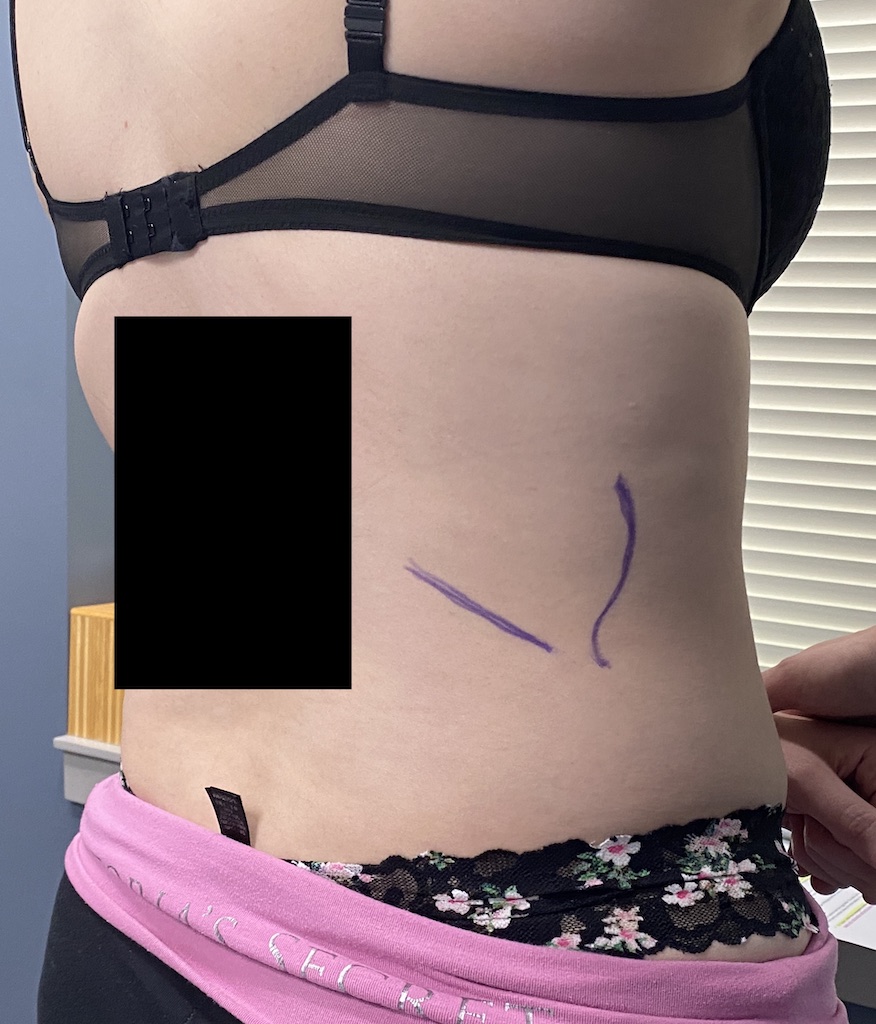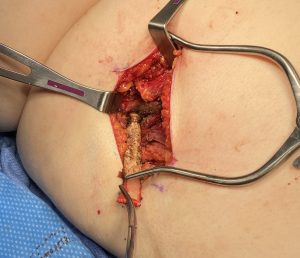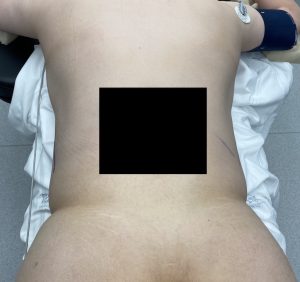Background: Rib removal, while not a commonly performed or known procedure, can provide an effective waist narrowing effect in the properly selected patient. It is commonly performed through an oblique back incision of 4 to 5cms length centered over the 11th rib. Through this incision the outer portion of ribs 11 and 12 can be removed and, in some cases, rib #10 as well.
But being able to reach and safely take rib #10 is not assured from the oblique back incision. The pleura of the lung is in proximity to this rib level and the curve of rib #10 as it wraps around the torso to the subcostal area in front can make its removal technically challenging.
The relevance of rib #10 removal in isolated waistline narrowing can be debated. The anatomic waistline is at the umbilical level and definitely correlates to ribs #11 and #12. Rib #10 lies above the anatomic waistline level. But when a more significant torso narrowing effect is desired the value of rib #10 removal is absolutely necessary.


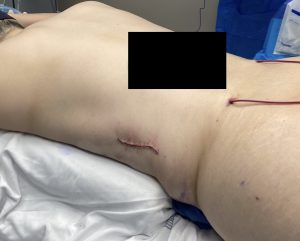
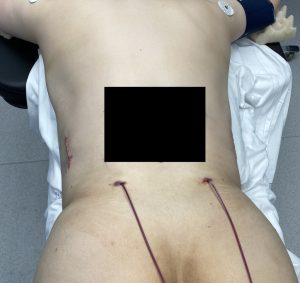
It is interesting, although perhaps not surprising, that changing the orientation of the rib removal incision provides improved exposure for higher torso modifications. For those seeking maximal side of the torso reduction rib #10 is critical …much more so than the short rib #12. Equally important is that the length of the latissimus muscle than can be reduced is greater. For those with a more boxy shape, such as the transfemale, this type 2. rib removal approach is better suited than the change provided by the type 1 approach with the lower oblique back incision.
Case Highlights:
1) A more complete torso narrowing effect comes from changing the traditional rib removal oblique back incision to a more vertical lateral one. (Type 2 rib removal)
2) The vertical lateral incision assures that rib #10 is taken from the back all the way to its cartilaginous subcostal attachment.
3) The vertical lateral incision also provides better access to remove the outer border of the latissimus dorsi muscle with lateral plication.
Dr. Barry Eppley
World-Renowned Plastic Surgeon

